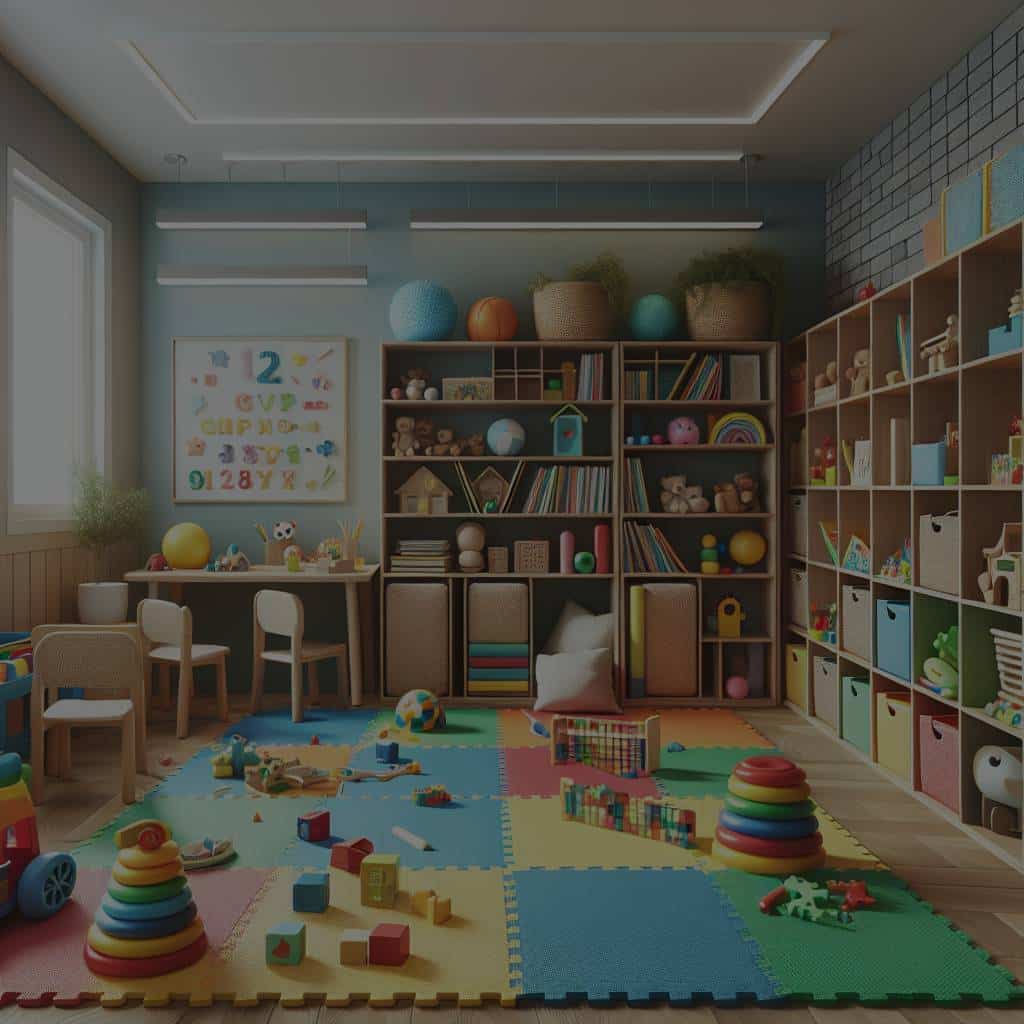How Can You Create a Durable and Safe Playroom Floor for Active Kids?

Creating a playroom for your children can be an exciting endeavor. It gives your little ones a space of their own, where they can explore, create, and let their imagination run wild. Regardless of the room’s size, you want an area that stimulates play and creativity, but, above all, ensures safety. One of the most critical aspects to consider during this design process is the flooring.
Choosing the Right Material for Your Playroom Flooring
Before diving into various ways of creating a child-friendly playroom, it’s crucial to consider the type of flooring you will use. The floor is not only the foundation of the room but also a crucial factor in children’s safety and comfort.
Additional reading : What Are the Best Custom Shelving Ideas for a Collector’s Display Room?
Carpet is often the first choice for a playroom floor. Its softness provides a cushion against falls and reduces noise levels. In addition, it offers a comfortable surface for children to sit or lay on while playing. However, carpet can be difficult to clean and may trap allergens.
Rubber flooring is another excellent option. Not only is it durable and easy to clean, but it’s also slip-resistant and offers excellent cushioning for active play. Additionally, rubber flooring comes in a variety of colors and patterns, making it easy to match your playroom’s design and theme.
Topic to read : How Can You Create a Minimalist and Relaxing Zen Patio on a Budget?
Vinyl is also worth considering. It’s affordable, easy to clean, and resistant to scratches and dents, making it a practical solution for a high-traffic area like a playroom.
Incorporating Safety into Your Playroom Design
Safety should be a priority in every aspect of your playroom design, including the flooring. A slip-resistant surface will reduce the likelihood of falls while a soft or cushioned floor will minimize injury should a tumble occur.
To increase the safety of your playroom, consider making use of area rugs or interlocking foam tiles placed strategically throughout the room. These provide extra cushioning in areas where your kids are likely to play the most. Just make sure that these rugs or tiles are securely attached to the floor to prevent tripping hazards.
When it comes to the furniture in the room, opt for pieces with rounded corners and avoid glass or sharp-edged furniture. Also, ensure that all furniture is secured to prevent tipping.
Storage Solutions for a Child-Friendly Environment
Good storage solutions are essential for maintaining a clean and organized playroom. Having a place for everything will not only make the room look more appealing, but will also make it safer for your kids. Toys strewn all over the floor can cause accidents, and a cluttered space can overwhelm children, hindering their play.
Shelves, baskets, and bins are excellent for storing toys, books, and art supplies. Make sure that these storage solutions are at a height that the children can easily reach. This will not only encourage them to clean up after themselves, but will also prevent accidents caused by kids trying to reach things that are too high up.
Selecting Wall Colors and Decor for a Stimulating Space
The wall color and decor you choose for your playroom can greatly contribute to the overall atmosphere of the space. Bright, cheerful colors can stimulate creativity and evoke happiness, while cool, calming shades can promote relaxation and focus.
When choosing wall colors, keep in mind that lighter shades will make the room look larger and more open. If you decide to go with a bold, vibrant color, consider using it on just one accent wall to prevent the room from feeling too overwhelming.
Wall decor can also play a vital role in creating an engaging environment. Posters, maps, and educational wall stickers can be both fun and informative. Artwork created by the children themselves can add a personal touch to the room and make them feel proud.
Creative Ideas to Customize Your Playroom
Finally, let’s look at some creative ways to customize your playroom floor. One idea is to use flooring of different colors or textures to divide the room into different areas, each dedicated to a different type of play or activity. You might also consider adding a giant floor puzzle or an interactive play mat that can provide hours of fun.
Alternatively, if you’ve chosen a neutral floor color, you can add color and interest with brightly colored rugs, cushions, or bean bags. You might also want to include a cozy reading nook, a craft station, or a stage area for budding performers.
Remember, the best playrooms are those that evolve with your child. Therefore, consider leaving some room for flexibility in your design. This will allow you to easily update the space as your child grows and their interests change.
The Ultimate Buying Guide: Playroom Flooring Options and Safety Measures
Deciding on the type of playroom flooring is of utmost importance. The floor is the base of all fun activities and can greatly impact the safety measures in a playroom. Hence, it’s essential to make a well-informed decision. Besides carpet, rubber flooring, and vinyl, there are several other options to consider.
Interlocking foam mats are another fantastic option for creating a safe and comfortable play space. They are durable, offer excellent cushioning and are easy to clean. Plus, they come in a variety of vibrant colors that can stimulate a child’s senses and inspire creativity.
Cork flooring is also a worthy contender. It’s a natural material that is hypoallergenic, making it an excellent choice for kids with allergies. Additionally, it’s easy to clean, slip-resistant, and provides a warm and soft surface for your children to play on.
Gym flooring is another option that’s worth considering. It’s resilient, shock-absorbent, and easy to maintain. It’s also available in various colors and patterns, allowing you to customize the play area to suit your child’s preferences.
Regardless of the flooring type you choose, remember that safety is paramount. Ensure that the surface is slip-resistant and provides adequate padding to minimize the risk of injuries during active play.
Transforming a Kids Playroom: Fun Designing Ideas and Age-Appropriate Features
Creating a child playroom can be a delightful experience if you let your imagination run wild. Here you can explore various playroom ideas to create a space that’s both fun and functional.
A toggle menu on the wall that changes every day can be an innovative addition to the playroom. It can include different activities for each day of the week and encourage your kids to engage in a variety of play experiences.
For those with active kids, a climbing wall can be a great addition. It’s not only a fun activity but also an excellent way to promote physical exercise. Remember to install safety mats below to cushion any falls.
An artistic corner can inspire creativity in children. This area could include a low table with a variety of art supplies such as paints, crayons, and paper. Don’t forget to add some storage solutions here for easy clean-up.
Creating a playroom library with a cozy reading nook can spark a love for reading in your children. Include age-appropriate books and create a comfortable seating area with cushions or beanbags.
No matter how you choose to design your playroom, it should be a safe, stimulating space that evolves with your child. So, keep in mind their age and interests while designing and don’t forget to leave some room for flexibility.
Conclusion
Creating a durable and safe playroom floor for active kids can seem like a daunting task, but with the right guidance and a bit of creativity, it can be an enjoyable project. The key is to select the right flooring option that offers safety, comfort, and easy clean-up, and to incorporate a variety of stimulating features and activities suitable for your child’s age and interests.
Remember, the best playrooms are those that cater to a child’s evolving needs. Hence, flexibility is crucial in playroom design. With these tips, you’re now well-equipped to create the perfect playroom where your child can learn, grow, and have fun in a safe environment.
